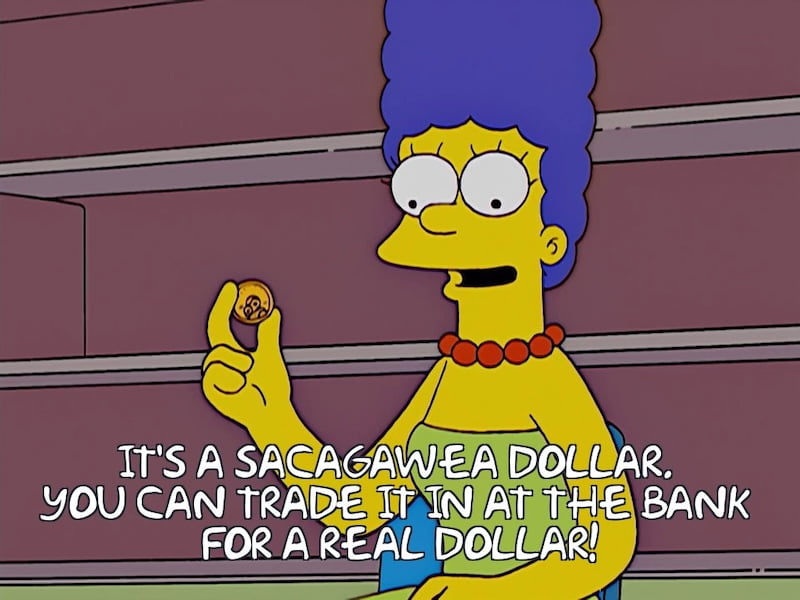If you watched TV in 2000, you probably saw some of these ads: Britney Spears and NSYNC hawking a McDonald’s exclusive CD, a bunch of guys going “Wasssup?”, dueling commercials for collect calling that became completely obsolete by the next decade, and trailers for a reality/talent show that really hasn’t aged well (and begat a newer version two years later that also hasn’t aged well).
You also likely saw commercials for a new dollar coin.
To generate hype and prepare the public for what was coming, the Mint embarked on a $41 million advertising campaign to hype the new coin (for reference, the Mint only spent about $600,000 to promote the Anthony Dollar). Featuring Michael Keaton as a talking George Washington head from the $1 bill, the longtime face of the dollar assured us that he was not on the new coin and that we shouldn’t be alarmed by that.
The warning worked on another level — one of the persistent criticisms of the much-maligned Susan B. Anthony dollar was that it was too close in size to the quarter, which also featured Washington.
The Mint took additional steps to distinguish the new dollar coin from the quarter. Gone was the reeded edge; the new dollar coin would have a smooth one. But the big change was the color. The Mint chose to strike their new dollar coins on a distinctive gold colored planchet (it was actually brass manganese).
And the design was a far cry from the unpleasant and widely derided obverse portrait of Anthony. Featuring Sacagawea, the American Indian guide who helped Lewis and Clark with their expedition, the obverse design was beautiful and eye-catching — the latest in a string of aesthetically-pleasing Native American-themed U.S. coins.
At first, it seemed like all of the Mint’s efforts would pay off. “Contrary to conventional wisdom today, the Sacagawea dollar was very popular in its first year,” former United States Mint Director Philip N. Diehl wrote in Coin Week in 2014. “Lines formed at many Walmart stores the day the coin was launched and many stores exhausted their first six-week supply within a week or two.” Diehl added that the Mint shipped more Sacagaweas during that first year than Anthony Dollars in the preceding 20 years.
But then, demand for the coin cratered after that first year, going from over 1.2 billion minted in 2000 to approximately 133 million in 2001. By the following year, the coin was minted only for collectors, and the Sacagawea dollar had become synonymous with “flop.”
So what happened?
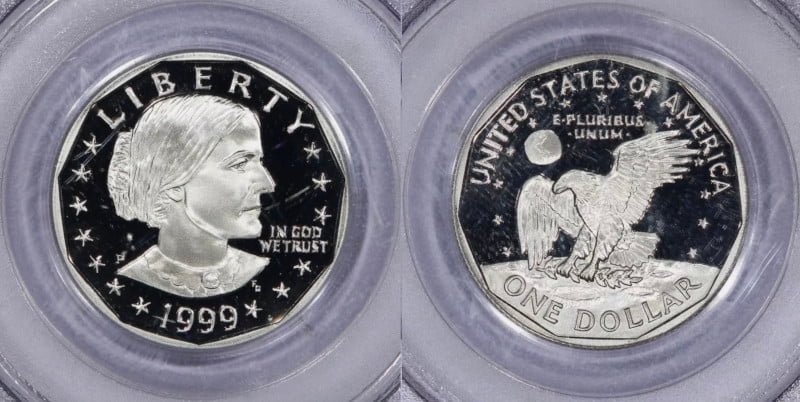
To figure it all out, let’s go back to the year 1999. There were several big comebacks that year. Santana made a triumphant return to the top of the album charts with Supernatural. Star Wars: Episode I – The Phantom Menace allowed us to get reacquainted with well-known characters like Obi-Wan Kenobi, Anakin Skywalker and Yoda and embrace new favorites like Jar Jar Binks Qui-Gon Jinn and Darth Maul. And, in the one nearest and dearest to my heart, Manchester United scored two goals in second-half stoppage time in the UEFA Champions League Final to beat Bayern Munich, 2-1.
And, after a near 20-year hiatus, the Anthony dollar made a comeback.
For most people, the fact that there hadn’t been a dollar coin in circulation for most of the preceding two decades had hardly been a cause for concern. Dollar coins have never circulated all that well and have often been unpopular with the general public outside of collectors. Additionally, the near-20 year gap between Anthony dollars was nothing compared to the period from 1935 to 1971, when the Mint didn’t produce any new circulating dollar coins.
Despite the widespread apathy of the general public, the Anthony dollar had actually become fairly popular with vending machines, stamp dispensers and mass transit ticket kiosks. (I accumulated many of the Anthony Dollars in my collection by buying subway tickets in New York City.) So much so that the Mint’s inventory of Anthony Dollars had been reduced by nearly a half between February 1996 and the end of 1997.
To fill this demand, Congress authorized the one-time return of the Anthony Dollar in 1999.
Also included in that legislation was a provision authorizing the design of a new dollar coin — one that would address the flaws of the Anthony Dollar. Like many acts of Congress, the ensuing law didn’t just focus on the immediate problem at hand. In this case, the law also created the 50 State Quarters program, an initiative long championed by Representative Mike Castle (R-DE) a/k/a “The Coinage Congressman”) but opposed by the Treasury Department.
The Mint wasted no time, producing over 41 million 1999 Anthony Dollars. As a result, these coins are no more valuable or rare than their earlier counterparts, and it’s pretty easy to find affordable proof and deep cameo specimens. I got the above off eBay for less than $30.
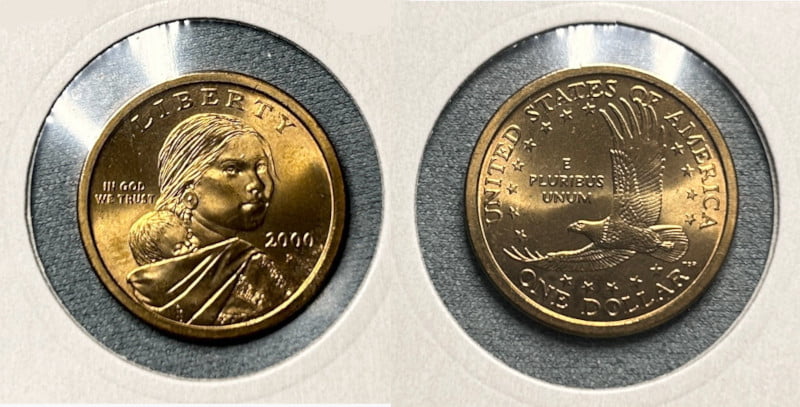
The Anthony dollar was a one-year fix that bought time for the Mint to come up with a better, prettier and more useful dollar coin. When it came time to design this new coin, one of the biggest choices facing the Mint was who to put on the obverse. According to Coin Week, subjects ranging from Eleanor Roosevelt to Sojourner Truth were considered, as well as a modification of the existing Peace Dollar design.
Ultimately, it came down to two finalists: Sacagawea and the Statue of Liberty. The Dollar Coin Design Advisory Committee, which was assembled by then-Secretary of the Treasury Robert Rubin, recommended Sacagawea. Castle, however, favored the Statue of Liberty and had the U.S. General Accounting Office commission a poll which had his preferred choice winning by a 65% to 27% margin over Sacagawea.
Nevertheless, the Mint chose Sacagawea and invited 23 artists to submit designs. The Mint then conducted focus groups and polls to narrow the list and ultimately chose an obverse design submitted by sculptor Glenna Goodacre of a young Sacagawea holding her infant son. For the reverse design, they went with an eagle in flight image submitted by Mint engraver Thomas Rogers.
Despite its beauty, and the extensive ad campaign accompanying it, the Sacagawea dollar generated a lot of confusion when it was finally released. Some people thought it looked fake and likened it to “play money” while others were upset that there was no actual gold in a coin that had been marketed as a “golden dollar.” The main complaint, however, was an old one: since the Sacagawea was the same diameter as the Anthony dollar, it was still too close in size to a quarter.
Another old issue came up. Like many new coins, the public largely kept them as collectors items instead of using them in circulation. “My children are now teenagers, but when they were younger, we used to play a little game with books that they had called ‘Where’s Waldo?’ I have outgrown ‘Where’s Waldo?” and so have my children, but these days I ask the question, where is the Sacagawea Golden Dollar?” Senator Byron Dorgan (D-ND) said in 2002 during an Appropriations subcommittee meeting.
Some politicians blamed the vending machine industry, claiming the bill had been more to satisfy them than because there was a genuine demand for the coin from consumers. Indeed, the need for a coin to fit existing machines meant that the Mint could not experiment with alternate designs that could have helped consumers better distinguish the coin from the quarter, including thicker, heavier coins or hexagonal or octagonal shaped planchets.
Diehl hypothesized that the coin failed because the Mint didn’t withdraw the dollar bill from circulation, which would have forced consumers to adopt the Sacagawea dollar. Others have made this argument, too — and periodically, there will be attempts by some members of Congress to eliminate the dollar bill or phase it out. However, lobbying groups seeking to protect the dollar bill, like Save the Greenback, have been quite successful at stymieing such efforts. When it came to the Sacagawea dollar, they had a powerful partner: the Mount Vernon Ladies Association, which was none too happy about seeing those Washington-fronted dollar bills go the way of the dodo and the gold standard.
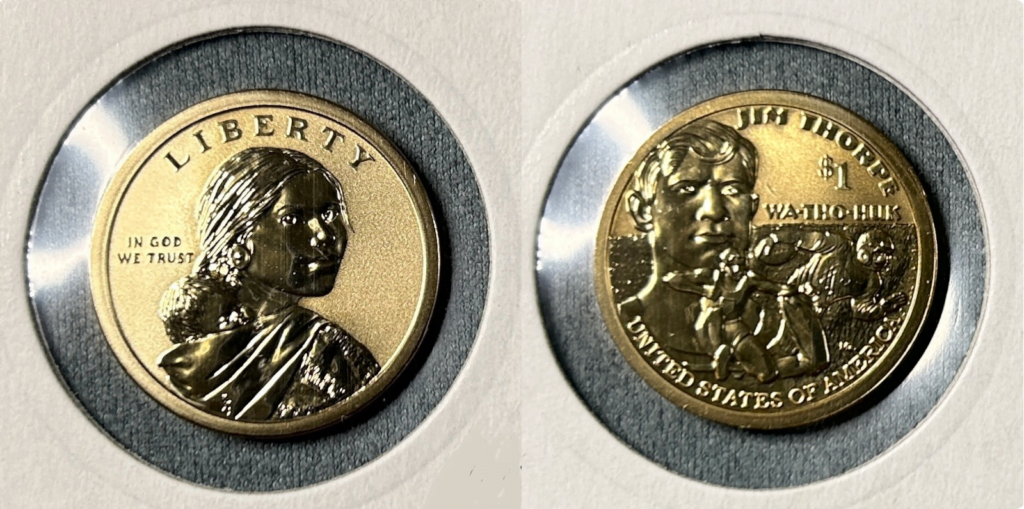
Nevertheless, in 2009, Sacagawea got another chance. A bipartisan group of Representatives including Castle, Barney Frank (D-MA) and Dan Boren (D-OK) proposed a new circulating coin program to honor Native Americans that would keep the Sacagawea obverse while coming up with new reverse designs every year.
The bill, which easily passed both the House and Senate and was signed into law on September 20, 2007, contained an interesting provision. “In order to remove barriers to circulation, the Secretary of the Treasury shall carry out an aggressive, cost-effective, continuing campaign to encourage commercial enterprises to accept and dispense $1 coins that have as designs on the obverse the so-called ‘Sacagawea design,'” the law stated. Presumably, this could have given the Secretary enough discretion to remove the dollar bill from circulation if they thought it was impeding adoption of the dollar coin.
In actuality, it never happened and as such, the second verse was the same as the first for Sacagawea. The coin flopped — so much so that, in December 2011, Treasury Secretary Timothy Geithner announced subsequent coins would only be struck for collectors.
Unlike Anthony dollars, there are some pretty valuable Sacagawea coins out there. Cheerios did a promotion where they gave away a free coin in certain boxes and a small number of those Sacagaweas ended up being a rare pattern variety. You can tell the difference by looking at the reverse image— the pattern coin was struck using an earlier die that had more detail on the eagle’s tail feathers. These coins are very valuable and can go for a few thousand dollars depending on the condition.
There are also a few error and mule coins that are especially valuable. Most notably, there are a few mule coins combining a Washington quarter obverse with a Sacagawea reverse. One sold for $144,000 in 2022 — a record for a Sacagawea coin. So much for the commercial telling us that he wasn’t on it…
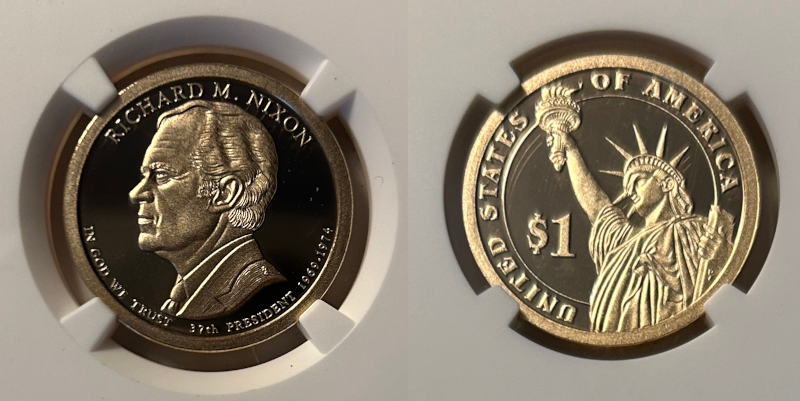
Of course, that wasn’t the last time the Mint would produce a circulating dollar coin. After the initial failure of the Sacagawea dollar, Castle proposed replacing it with a series of coins commemorating our presidents à la the statehood quarters program. “A 2002 GAO report to Congress indicated more Americans would use the dollar coin if there was a rotating design similar to that of the 50-state quarter program,” Castle said in 2004.
The presidential dollar coin series was eventually enacted in 2005 and was similarly unsuccessful. As I’ve written before, I didn’t care for these coins and thought they used some strange designs to depict certain presidents (why did they make John F. Kennedy — one of the handsome and photogenic men to ever serve as president — look less appealing?) Despite plans to release all of the then-planned coins into circulation, they changed course after James Garfield’s coin hit the market. Like the Sacagaweas, subsequent Presidential dollar coins would only be released to the collectors’ market
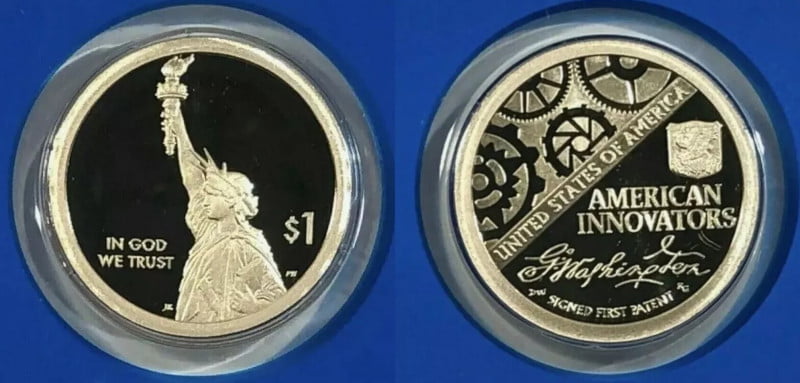
Since then, the Mint seems to have learned its lesson about circulating dollar coins. In 2018, when they released the American Innovation collection, a series of dollar coins that commemorate important inventions and achievements in U.S. history, they were marketed towards collectors. The obverse has a very minimalistic design of the Statue of Liberty against a plain background that I quite like (I’m sure Castle was pleased to finally see the Statue on the obverse of a dollar coin).
And since no one uses cash anymore, that should spell the end of any more attempts to mint a circulating dollar coin. Then again, I’ve been wrong before. Maybe the Mint will come up with a new dollar coin that has a hole in the middle and authorize a slick new ad campaign featuring Homer Simpson trying to eat it because it looks like a donut.

